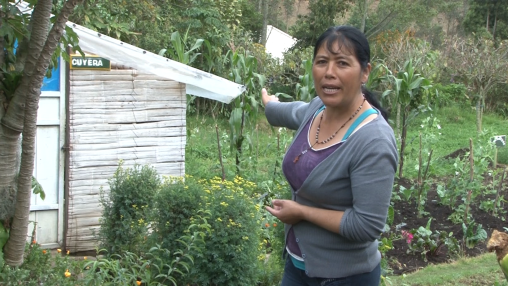The smoldering Galeras volcano, one of the most active in Colombia, appears to silently watch over the disparate inhabitants of these rich forestlands: human beings, thousands of deer and other animals, and over 99 species of orchid.
Some pre-Hispanic civilizations – including the Inca, who reached southern Colombia – offered up a variety of tributes, including humans, to appease the mountain gods.
Today, the scene at the foot of this volcano is very different: the Galeras Flora and Fauna Sanctuary, some 700 kilometers south of Bogota, has become an example of environmentally-friendly agriculture.
How can protecting this biodiversity be combined with farming, one of the pillars of Colombia’s economy?
In recent years, the triangle comprised of the defense of nature, the wellbeing of farmers and economic growth has become increasingly important, especially in zones located near protected areas, which cover 12% of the country’s landmass.
Encompassing more than 7,000 hectares, the Galeras Sanctuary is home to 135 bird species, 600 plant species and a third of the deer species found in Colombia, among other fauna.
Small farms alongside mountain streams dot the volcano’s slopes. Flowers line the front of the houses and signs in the fields indicate the different crops. These farms grow coffee and wheat among other crops.
The human footprint
While the sanctuary is, of course, a protected zone, the surrounding area is not. The activities of farmers living near the reserve have an impact on the sanctuary.
Threats include forest fires, logging, the expansion of the farming frontier and indiscriminate hunting, according to Nancy López de Viles, Galeras Sanctuary Manager. According to government statistics, Colombia loses over 330,000 hectares of woodland every year for a variety of reasons, including illegal commercial logging.
In addition to affecting flora and fauna, these activities pose a threat to what is perhaps the greatest treasure of the sanctuary: four lakes, several rivers and more than 100 streams that supply water to the nearly 500,000 inhabitants of nearby communities.
“Before we developed awareness, we damaged the higher-lying areas,” says Dori Chávez, who owns a farm near the sanctuary. “Damage such as setting fires, taking the animals there to graze, letting them wander onto the wetlands,” she says.
Today, a joint project between the national park and surrounding communities – financed with a grant from the Global Environmental Facility and implemented by the World Bank and the Colombian Natural Heritage Fund- teaches farmers to take care of the reserve by employing more environmentally-friendly production techniques, without logging or water contamination. Locals also take special care to ensure that their waste products do not end up in the forest.
This methodology is being applied in other natural reserves of Colombia. It has benefited 300 families around the country, who farm and produce in harmony with the environment.
“Like having a thousand forest rangers”
Of course this was no easy process. Sandra Popayán, a local farmer, recalls “how they came here and said that we now had to conserve; we were scared because we said to ourselves ‘we won’t be able to live because of [the lack of] firewood’.”
But gradually, they developed more awareness. Today Sandra uses a biodigester to convert the waste produced by her farm plot into gas.
“If, today or tomorrow, we destroy the little forest that survives, we will affect the water supply. So we started to realize the importance of taking care of it,” said Dori Chávez.
Other farmers now protect the streams that descend from the mountain. For example, Jorge Almeida has planted some trees next to the stream running beside his farm. “We are trying to ensure that the water (wastewater from his house and field) does not directly flow into the streams,” he explained.
“Now it’s as if we had a thousand forest rangers, because the people protect their park,” says Nancy López. “For example, if a hunter comes, they are the ones to report it; they are watching those who cause damage,” she added.
Changes are becoming apparent. Farmers report that streams contained very little water previously, but now “a lot flows, for humans and for animals,” and that animal species are reappearing.
Despite these advances, the work is not finished. “Efforts to strengthen the communities must continue, with training in topics such as climate change, biodiversity and the importance of these ecosystems,” says Sanctuary Manager López.

